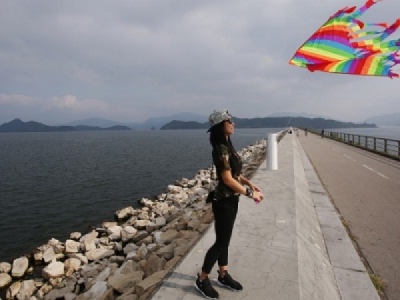
Posted on July 17, 2017
By Paul Ulrich, SCMP
Our two main reservoirs of Plover Cove and High Island hold 85 per cent of our freshwater supply, three quarters of which comes from a costly source: the Dongjiang. The Hong Kong government rejected the lateral expansion of reservoirs as too damaging to surrounding country parks, but it never looked into deepening Plover Cove to enhance our water security.
Deepening Plover Cove would enable us to take the Dongjiang water that we pay for but have no room to store, a waste of HK$800 million per year. A deeper main reservoir would also add flexibility in sourcing our supply. Instead of relying on Dongjiang water, Hong Kong could rely more on a cheap local source: man-made rainwater.
Cloud seeding to boost rainfall above a big reservoir’s catchment is a proven technique that drought-prone areas from California to Israel use at low cost. The induced rain would fill the increased storage capacity of Plover Cove, if it is made twice as deep. Its current depth averages under 20 metres, half that of High Island. As global warming has increased the cloud cover over Hong Kong, targeted cloud seeding makes sense: more than 50 countries use the technique.
Deepening Plover Cove would also reduce water loss. Water in deeper reservoirs evaporates more slowly. The 7 per cent evaporation rate for Plover Cove sees 10 million cubic metres of water disappear as vapour per year. Evaporation at both reservoirs could also be prevented by installing floating solar panels. An added benefit would be clean-energy production. The world’s biggest such installation of floating solar panels, in Anhui (??) province, generates as much energy as a full-size, 40-megawatt nuclear reactor.
Some might say dredging could affect the stability of the reservoir’s dams and shore banks, while altering the quality of Plover Cove’s water. Neither of these concerns seems insurmountable. To better reach the bottom of Plover Cove reservoir for dredging, we could transfer some of its water to High Island via pipelines built in the 1970s for the purpose of maximising capacity utilisation.
The added pressure of water in Plover Cove after its deepening would require reinforcing the dams’ structure, but dredging is a common practice. Within 20 years of most reservoirs’ construction, settlement deposits from upstream catchments reduce their capacity and necessitate dredging.
More intense and intermittent rainfall from a changing climate heightens the need for increasing the local storage capacity of water via a deeper main reservoir, to help protect Hong Kong if the Dongjiang source ever dries up.
Source: SCMP





